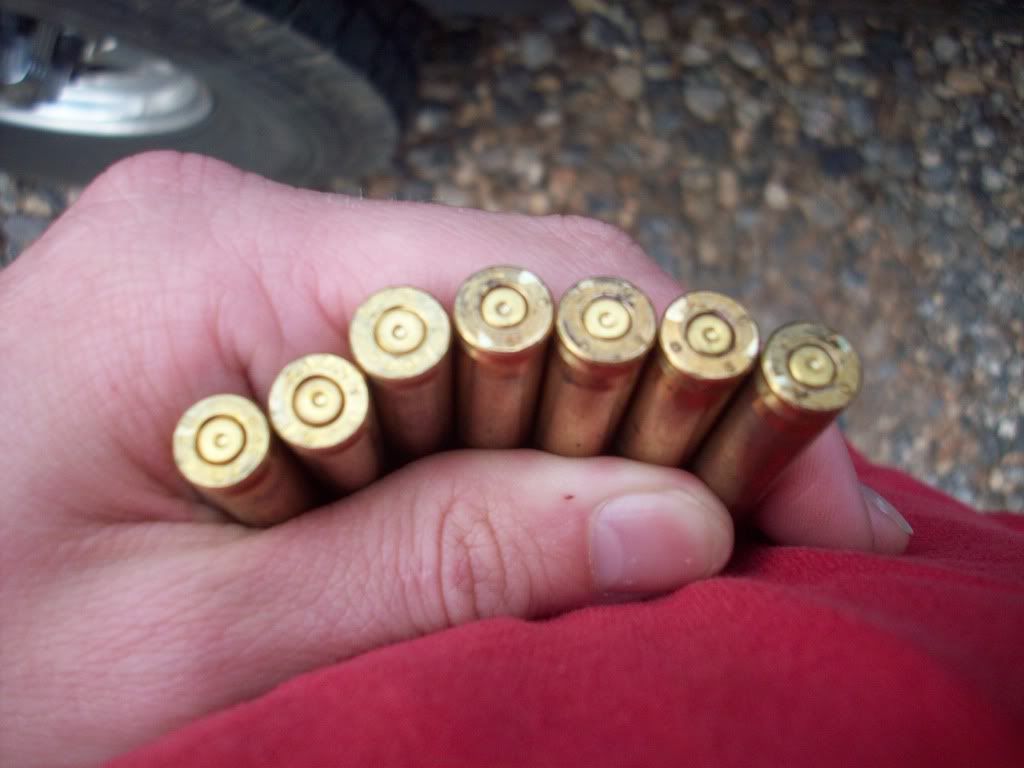I have a load for 77gr smk's in .223 that I really like the accuracy of, but it's showing signs of overpressure.
I am loading:
77gr smk
23.7gr varget
Winchester small rifle primers
Lake city brass
2.252-2.257" Overall
Here is a pic of the brass. You will notice two different types of brass and that is what my question is about.

In the pic above, the 3 pieces of brass to the left have a headstamp that is "LC", year, nato cross, and then 3 circles imprinted in equal thirds around the rim. The four pieces to the right are LC and the year equally spaced in quarters around the case, these were from federal xm193.
In the 65 degree weather the types of cases like the three on the left were not showing ejector marks, but almost every primer had a small nipple in it. The cases like those 4 on the right don't show primers nippling, but are showing ejector marks. I still feel like the primers look like normal as far as looking flat. I fired 30 rounds this weekend to test my load more in depth.
Are these to hot for an ar at the way they stand?
Could I go to some kind of commercial brass and possible reduce the pressure? I have lots of privi brass that I could try out.
I am loading:
77gr smk
23.7gr varget
Winchester small rifle primers
Lake city brass
2.252-2.257" Overall
Here is a pic of the brass. You will notice two different types of brass and that is what my question is about.

In the pic above, the 3 pieces of brass to the left have a headstamp that is "LC", year, nato cross, and then 3 circles imprinted in equal thirds around the rim. The four pieces to the right are LC and the year equally spaced in quarters around the case, these were from federal xm193.
In the 65 degree weather the types of cases like the three on the left were not showing ejector marks, but almost every primer had a small nipple in it. The cases like those 4 on the right don't show primers nippling, but are showing ejector marks. I still feel like the primers look like normal as far as looking flat. I fired 30 rounds this weekend to test my load more in depth.
Are these to hot for an ar at the way they stand?
Could I go to some kind of commercial brass and possible reduce the pressure? I have lots of privi brass that I could try out.



